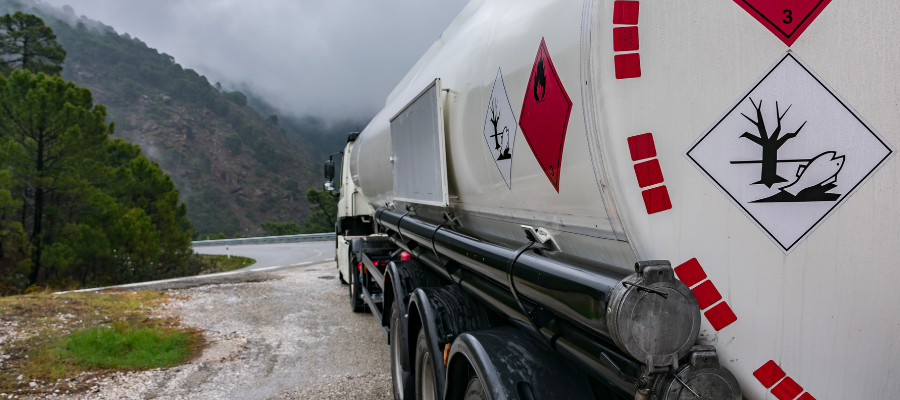🕒 Article read time: 2 minutes
Learning to deliver dangerous goods

The logistics industry is charged with delivering the nation’s goods in a safe and efficient manner.
While the nature of these goods varies from food to medical supplies, to the latest phones or games consoles, also transported is a cross section of dangerous goods.
NINE CLASSIFICATIONS OF DANGEROUS GOODS
Dangerous goods are categorised in nine groups; flammable liquids, gases, corrosive substances, flammable solids, oxidisers and organic peroxides, toxic and infectious substances, radioactive materials, explosive and miscellaneous substances. Statistics from the Department for Transport note that in 2020, 53 million tonnes of dangerous goods were lifted by GB-registered HGVs, accounting for 4% of all goods lifted domestically.
Percy Thrower, Manager – Dangerous Goods Information, Logistics UK, said: “Safety must always remain a top priority across industry, and anyone involved in the transportation of these goods – including the loading, unloading, filling and packing – must undergo some form of training.”
A SUITE OF TRAINING SOLUTIONS
There are multiple types of training offered, depending on your role in the transportation of these goods.
“Logistics UK holds a unique position in industry as one of only a few organisations who can train and advise across all modes,” Thrower said, “which is particularly beneficial when planning for modal shifts or contingency planning.”
The business group offers both online and face-to-face courses, which range from refresher courses, to item specific courses – such as the carriage of lithium batteries – and modal related courses such as shipping dangerous goods by road, as well as Dangerous Goods Safety Advisor (DGSA) training.
*https://logistics.org.uk/dangerous-goods-1
Published On: 14/07/2022 16:00:02

Comments Section
If you are a Logistics UK member login to add comments.